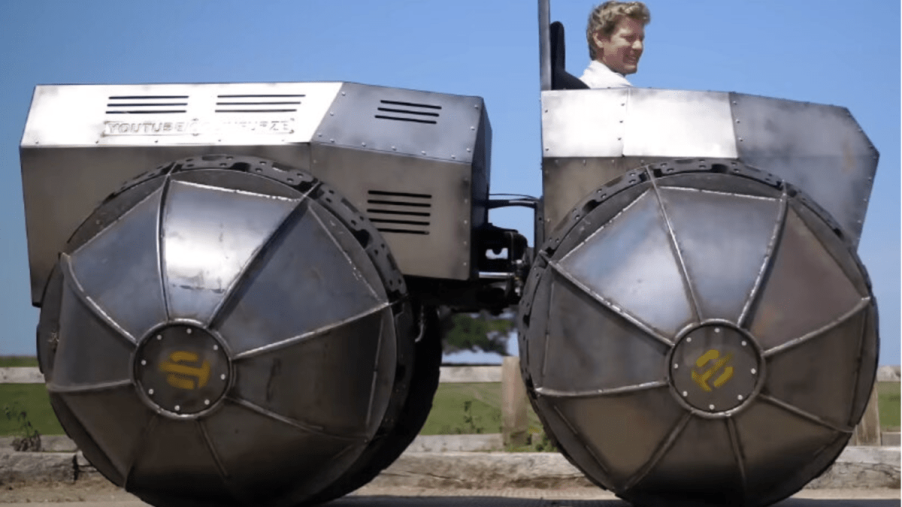
Is the Rhino Tank the Best All-Terrain Vehicle Ever?
Colin Furze is an “inventor and Youtuber.” That description should give one pause as, in most cases, they’re mutually exclusive. Nonetheless, Furze’s “Rhino Tank” off-road amphibious craft is a rehash of an actual one-off built back in the mid-1950s that did its job conquering mud, bogs, and water. So, will this modern take pave a new path for all-terrain and amphibious vehicles?
What was the purpose of the original 1954 Rhino?
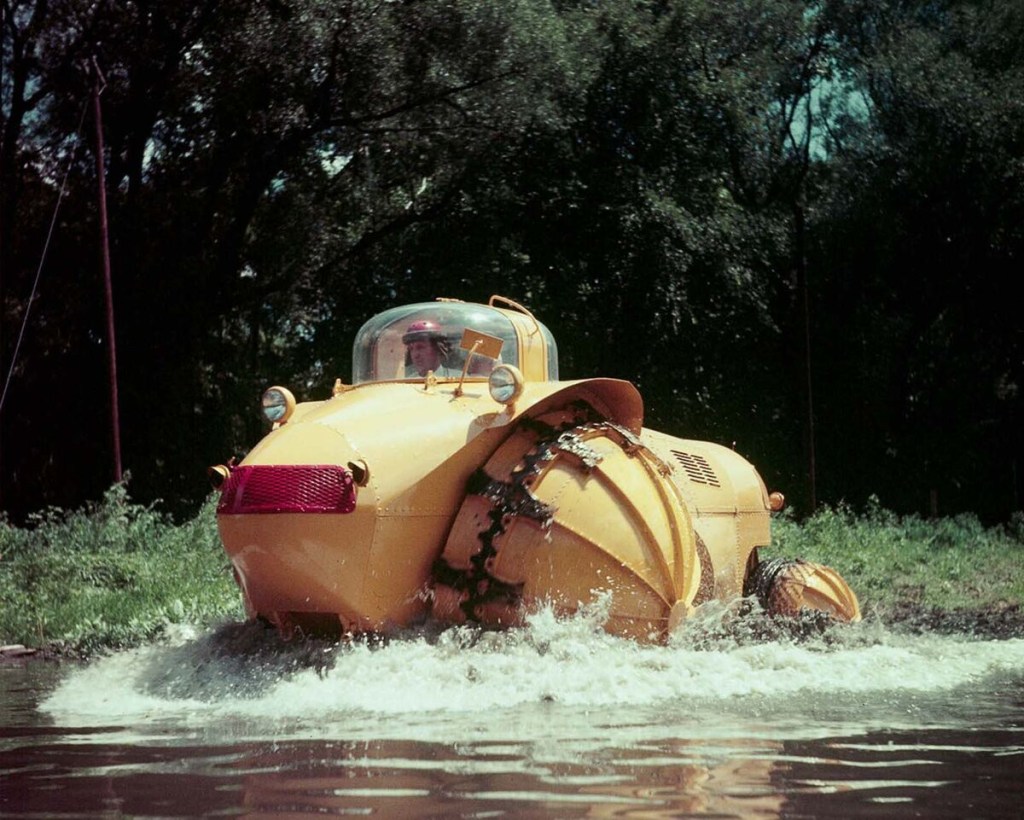
The original Rhino came to fruition in 1954 by Elie Aghnides, with an eye to offering a better alternative to the then-current military amphibian tank. There was only ever a single one made to his specs by Marmon-Harrington in Indianapolis. Its main feature was the huge six-foot-tall hemispherical wheels at each corner.
Each one weighed 1,500 lbs and was hollow. The idea of the hollow tires was to allow the Rhino to float in water. The design of these wheels was an improvement over tracks or special off-road tires in inclement conditions. What Aghnides was after was an amphibious vehicle that would gain traction as it sunk deeper into the mud.
Why didn’t the military want the Rhino?
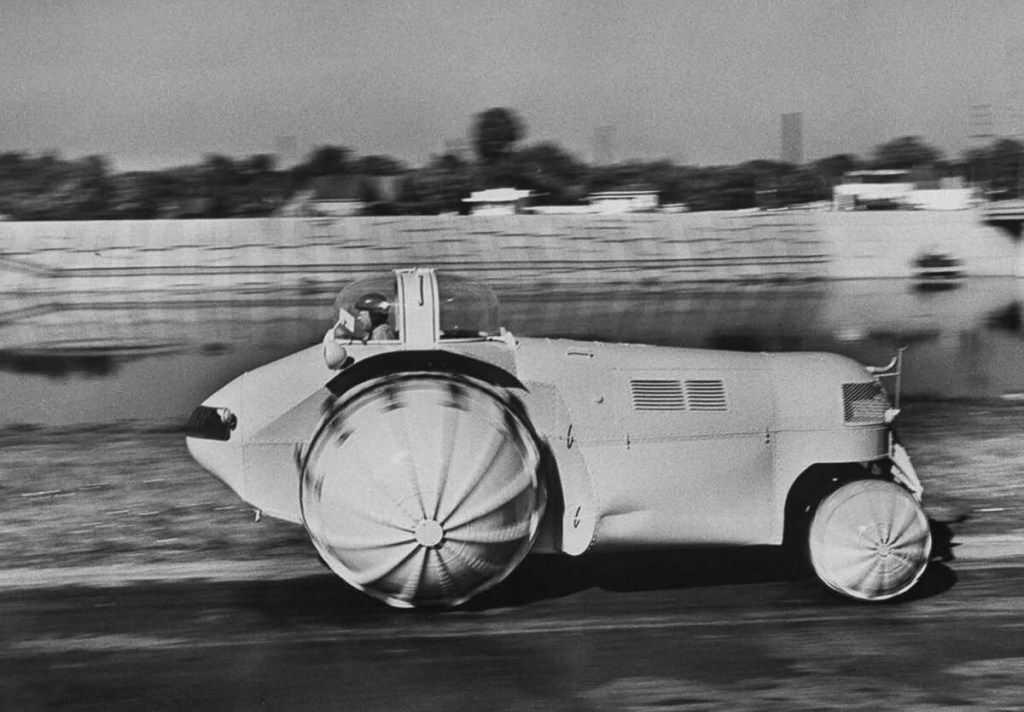
Power came through a hydro jet, though in water, it could only achieve about four or five mph. On land, the top speed was 45 mph. In the end, the military took a pass on the Rhino for fear enemy gunfire would put holes in the wheels, resulting in it sinking.
Furze’s objective was to see if the idea actually worked. He built a quickie version from a hydraulic dump tractor. To aid in maneuverability, it articulates in the middle. Hampering maneuverability is that it is only two-wheel drive, as opposed to the original’s four-wheel drive.
Was the Rhino Tank an improvement over the Rhino?
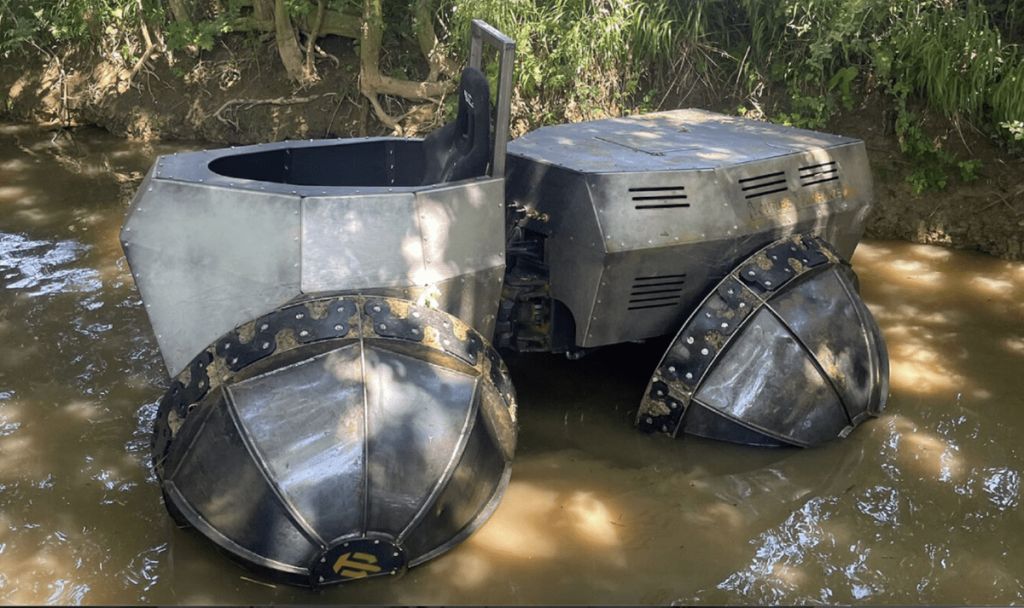
That difference became a detriment fairly soon after introducing his Rhino Tank into the mud. He got stuck. Also, one of the welds on one wheel broke, allowing water to get inside. Naturally, as water is apt to do, it began filling up the wheel. It weighed down that corner, causing further issues.
Trying different degrees of wet and mud didn’t change anything. The Rhino Tank got stuck. So, in the end, this experiment was a complete failure.
The reasons why it didn’t perform as the original Rhino did are numerous. Though weighing five tons or 10,000 lbs, the rubber around the highest portion of the wheels was for asphalt or otherwise hard surfaces. The treads of the wheels took over as the Rhino sank into mud. As it continues to sink, more of the treads or ribs dig in, giving more traction.
What was the main problem with the Rhino?
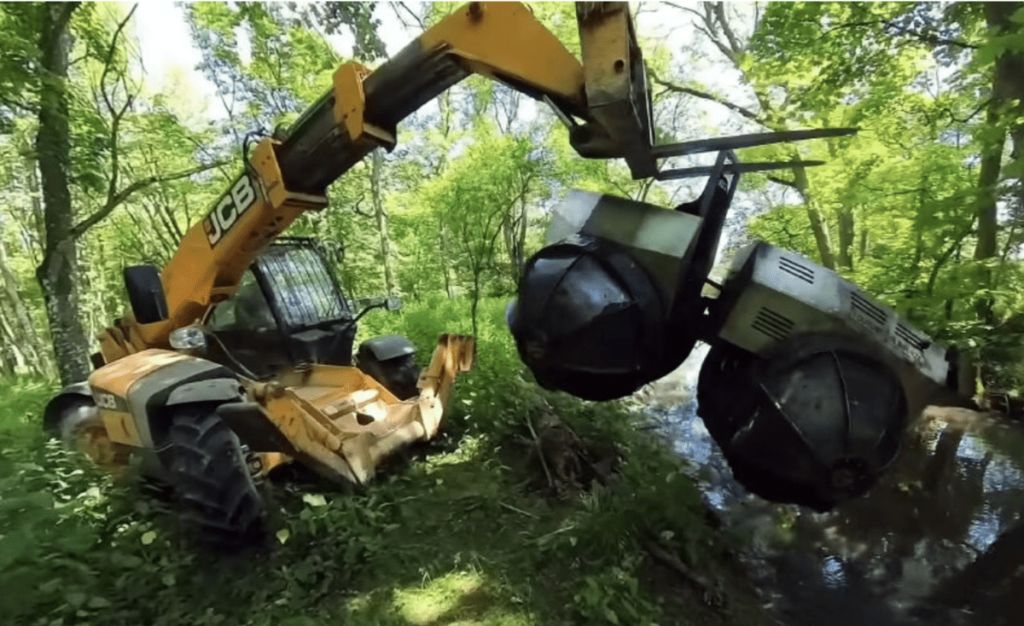
With a low center of gravity, the Rhino could tip 75 degrees, giving the treads more exposure to hard or soft surfaces. And it has enough power to grunt out of any conditions. That was a problem with Furze’s Rhino Tank. It didn’t have the power to pull itself out of the muck. And it was top-heavy, limiting the exposure of the treads.
But at least Furze and the Rhino Tank fulfilled their real purpose: to offer some light relief. For that purpose, it is a winner.



